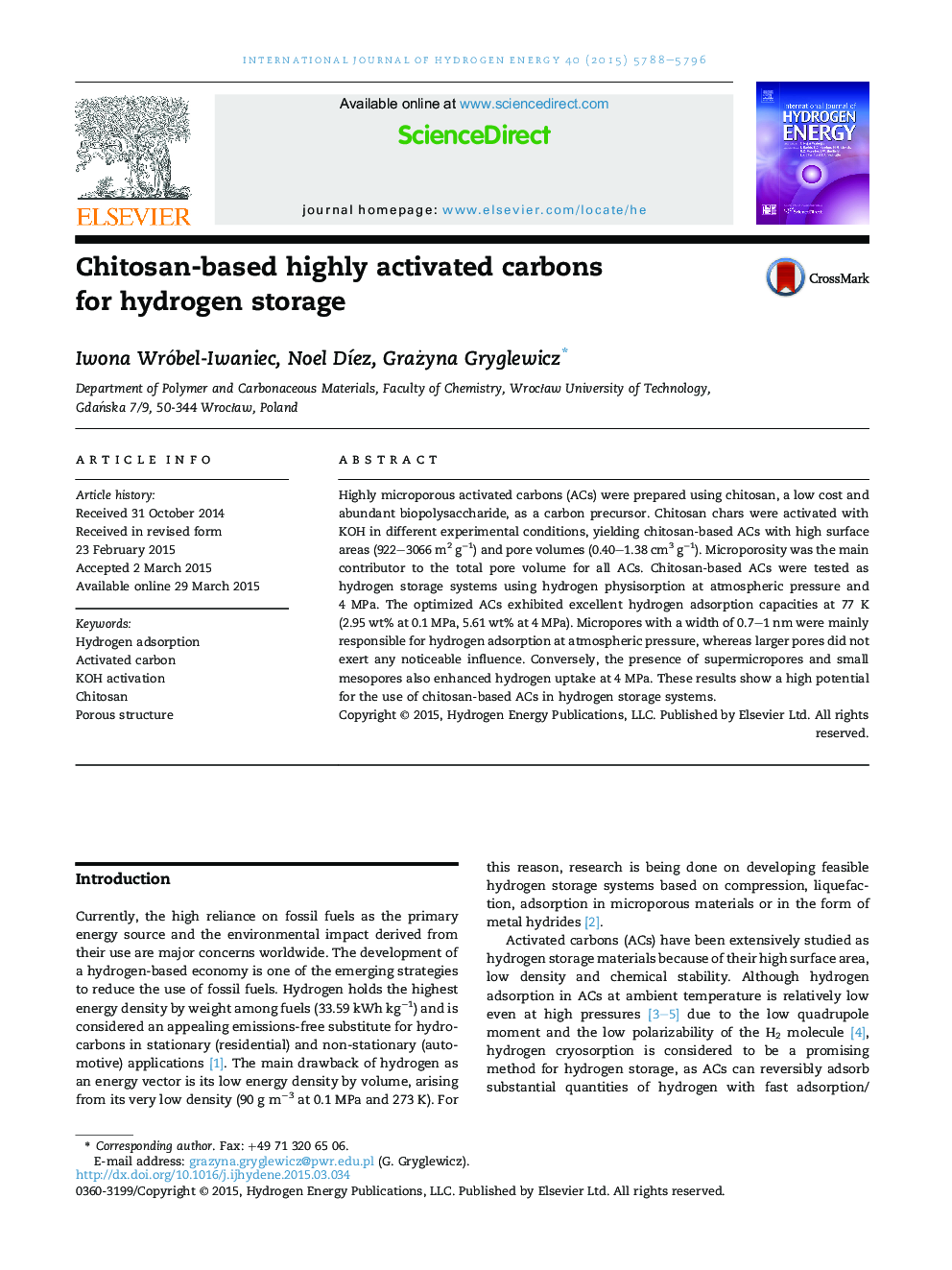| Article ID | Journal | Published Year | Pages | File Type |
|---|---|---|---|---|
| 1275423 | International Journal of Hydrogen Energy | 2015 | 9 Pages |
•Activated carbons with surface area up to 3100 m2 g−1 were prepared from chitosan.•Pore size distributions determine the H2 storage capacity in the activated carbons.•Pores of 0.7–1 nm define the H2 adsorption capacity at atmospheric pressure at 77 K.•The presence of supermicropores enhances H2 adsorption at 4 MPa.•Hydrogen adsorption capacity of 5.6 wt% at 77 K and 4 MPa was reached.
Highly microporous activated carbons (ACs) were prepared using chitosan, a low cost and abundant biopolysaccharide, as a carbon precursor. Chitosan chars were activated with KOH in different experimental conditions, yielding chitosan-based ACs with high surface areas (922–3066 m2 g−1) and pore volumes (0.40–1.38 cm3 g−1). Microporosity was the main contributor to the total pore volume for all ACs. Chitosan-based ACs were tested as hydrogen storage systems using hydrogen physisorption at atmospheric pressure and 4 MPa. The optimized ACs exhibited excellent hydrogen adsorption capacities at 77 K (2.95 wt% at 0.1 MPa, 5.61 wt% at 4 MPa). Micropores with a width of 0.7–1 nm were mainly responsible for hydrogen adsorption at atmospheric pressure, whereas larger pores did not exert any noticeable influence. Conversely, the presence of supermicropores and small mesopores also enhanced hydrogen uptake at 4 MPa. These results show a high potential for the use of chitosan-based ACs in hydrogen storage systems.
